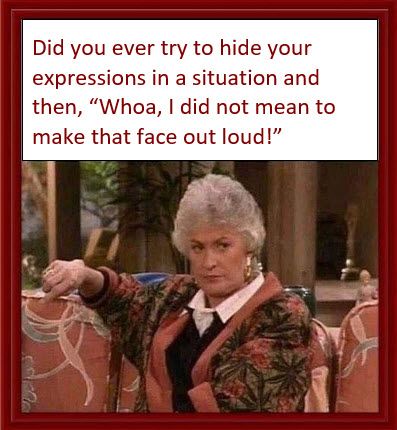Non-Verbal Communication: Whoops!
Of course, an actress, can portray any emotion required for a scene. Here's a shot of Bea Arthur (well-known for her role in "Golden Girls") and a statement about non-verbal behavior.

The Inventory for Work Attitude and Motivation (iWAM) has two scales related to communication. One called "Affective Communication" provides an indication of how much non-verbal information an individual might provide in the course of communicating.
The non-verbal communication might take the form of facial expressions, hand gestures, body language, or voice tone.
When doing the orientation interview prior to administering assessments, we make notes about some possible motivational patterns based on the individual's answers to questions and the non-verbal behavior exhibited.
Then, we check our notes against the iWAM results. We rarely have a conflict between our notes on high or low affective communication scores for individuals and the notes we made during the interview.
As the publisher, jobEQ, notes, there are potential assets and potential liabilities in every pattern based on context, role, and situation. In the case of a person who is high in Affective Communication, the potential asset is that, assuming she or he pays attention to the non-verbal behavior, the receiving party will get a clear indication of the emotions accompanying the words. This can be an element of authenticity for the sender.
On the downside, the display of emotions can sometimes reveal feelings or emotions that the sender would rather keep private. (See the Bea Arthur graphic again.) Making the emotions public can sometimes get in the way of effective communication or even the relationship.
For those who score low, the potential asset is that it may be easier to conceal emotions behind the message. The potential liability is that one might come across as unfeeling like the character Mr. Spock in Star Trek.
In either case, all this becomes more difficult to sort out day-to-day in the midst of a pandemic with so many wearing masks. The eyes alone don't always tell the whole story.